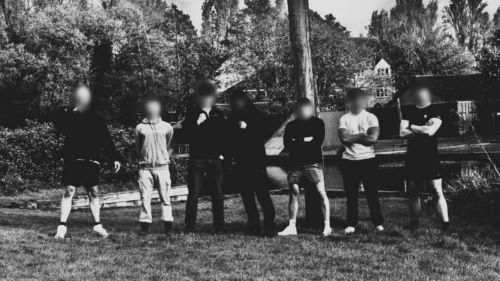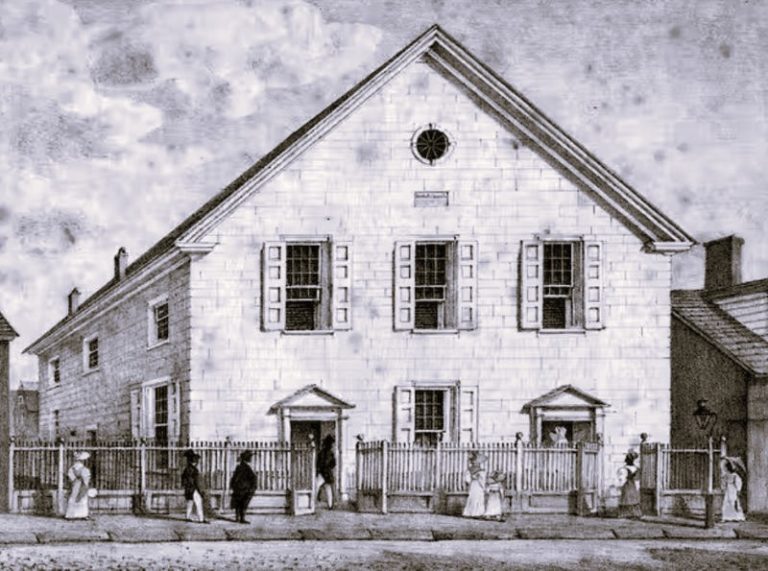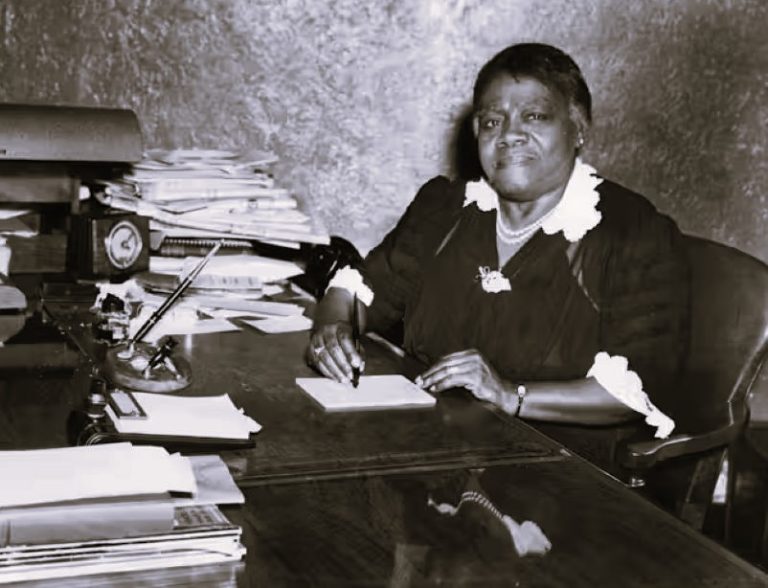

Extremism is evolving. It no longer always wears uniforms or shouts slogans in public squares. It builds muscle. It trains quietly. It prepares.

By Matthew A. McIntosh
Public Historian
Brewminate
Beneath the Bruises Lies a Creed
The young men who show up wear standard gym gear — hoodies, hand wraps, and mouth guards. They jog in place, stretch against cracked cinderblock walls, and punch the air in rhythmic silence. The soundtrack is a medley of metal riffs, barking trainers, and the occasional crack of knuckles against pads. At first glance, it could be any underground combat gym.
But then come the slogans. The black sun tattoos. The codes etched into gym walls. The nods to European fascist iconography and white power music piped in between sparring rounds. These are not just fighters. They are ideologues in training.
Across the globe, a growing number of violent extremist groups are adopting combat sports and mixed martial arts as a cornerstone of their recruitment, indoctrination, and organizational identity. They call it self-improvement. They frame it as discipline. But in practice, it is something more dangerous — a structured, aestheticized fusion of neo-Nazi ideology and physical domination.
This is the world of neo-Nazi fight clubs. It is expanding fast, networking internationally, and preparing for more than just street fights.
A Movement with Muscle
The fusion of fascist ideology and physical combat has deep historical roots. In 1930s Germany and Italy, fascist youth organizations emphasized physical strength, uniformity, and the ideal of the warrior-citizen. Athleticism was not just encouraged, it was politicized. To be strong was to be pure. To be violent was to be righteous.
Modern far-right groups are reviving that ethos with alarming sophistication. Organizations such as White Rex, founded in Russia by nationalist fighter Denis Nikitin, blend neo-pagan imagery, Slavic ultranationalism, and organized combat events into a unified cultural program. White Rex has hosted tournaments across Europe, drawing attendees who often double as political extremists or paramilitary affiliates.
In Ukraine, the Azov Regiment, once a volunteer battalion and now integrated into the national guard, attracted controversy for its ties to white supremacist circles. While the Ukrainian state distances itself from the more radical elements, Azov’s early roots in far-right subcultures, including MMA and street violence, remain an international touchpoint for extremist movements.
In Germany, Kampf der Nibelungen (Battle of the Nibelungs) emerged as the premier far-right martial arts event, regularly drawing neo-Nazis from across Europe before being banned by the government. Despite official crackdowns, underground versions continue, often announced last-minute through encrypted channels. Videos from these events show men in black T-shirts emblazoned with runes and fascist slogans trading blows before shouting nationalist chants in unison.
In the United States, the connection is less centralized but equally insidious. Groups like Rise Above Movement (RAM), based in Southern California, used MMA-style training to prepare members for violent street demonstrations. In 2017, RAM members were involved in the Charlottesville rally that ended in the death of Heather Heyer. Several were later convicted of conspiracy to riot, but the blueprint remained.
Why Combat Sports?
Combat sports offer more than exercise. They provide hierarchy, ritual, and a seductive mix of violence and discipline. For disenfranchised young men, especially those adrift in the online culture wars, they offer belonging and power. Within neo-Nazi fight clubs, this structure becomes a mechanism for radicalization.
There is a philosophy to it. To “harden the body for the coming war.” To embody struggle, both literal and racial. To fight not just for fitness, but for a cause.
The gym becomes a recruitment center. Ideological literature is handed out after training sessions. Political discussions take place between rounds. Trainers are often vetted ideologues. Members are encouraged to read, fight, and post. Physical transformation becomes intertwined with ideological loyalty. As one researcher noted, it is “not fitness for health, but fitness for hate.”
The Internet as Amplifier
These groups do not operate in isolation. Online networks, often on platforms like Telegram, Bitchute, and Discord, connect gyms and fighters across borders. They share training videos, fight footage, and ideological texts. Hashtags like #WhiteFitness or #StrengthAndHonor signal affiliation without overt claims. Some accounts post workouts alongside translated excerpts from Mein Kampf or fascist thinkers.
One popular Telegram channel based in Poland recently posted a video of young men sparring in the woods, followed by a message about “cleansing the blood through sweat and fire.” The video was viewed thousands of times and reposted by groups in Brazil, France, and the U.S.
This transnational network mirrors that of jihadist movements, with one key difference: many of these fighters aim to stay under the radar. Rather than wage open war, they talk of infiltration, endurance, and preparation. Their vision is not of sudden collapse, but of a long war of attrition in which the physically and ideologically strong will eventually triumph.
Intelligence Agencies Are Taking Notice
Western intelligence and counterterrorism officials are increasingly concerned. In 2020, a leaked FBI report identified combat sport and fitness circles as “new avenues for recruitment and radicalization” among white supremacist groups. In Germany and France, national police have begun tracking gyms associated with known extremist figures.
But law enforcement faces a challenge. Combat sports themselves are not illegal. Nor is fitness. And in many places, these clubs do not advertise any overt affiliation with banned groups. They exist in the grey zone — sometimes in public gyms, sometimes in private homes. Without direct evidence of incitement or planned violence, they are difficult to prosecute.
Moreover, the cultural climate surrounding masculinity and self-improvement often provides a protective sheen. A crackdown on such gyms risks being portrayed as an attack on manhood or conservative values. This framing is often deliberately cultivated by the groups themselves, who position their fight clubs as antidotes to what they see as the “weakness” of liberal society.
Real-World Consequences
While much of the activity remains underground, the consequences surface in moments of violence. The men who beat counter-protesters in Berkeley. The young nationalist arrested in Slovakia with a tactical vest and a manifesto. The German skinheads linked to a bomb plot who met through a martial arts training circle.
In Brazil, authorities recently investigated a network of far-right fight clubs in São Paulo and Curitiba, connected through Instagram and Telegram. Some members were found to be in contact with neo-Nazi groups in Germany and Eastern Europe. In one case, an 18-year-old was arrested with explosives and white supremacist literature in his apartment. His gym had become a place not just to lift, but to plan.
These are not isolated incidents. They are pieces of a pattern that is becoming clearer with each report, each arrest, each leaked video.
What Comes Next?
The rise of neo-Nazi fight clubs reflects a deeper cultural shift. Extremism is evolving. It no longer always wears uniforms or shouts slogans in public squares. It builds muscle. It trains quietly. It prepares.
There is no single policy fix. Addressing this phenomenon requires a blend of monitoring, community intervention, and digital counter-radicalization. It also requires asking hard questions about what kinds of masculinity are being promoted in cultural spaces, and how discipline, strength, and belonging are being co-opted into movements built on hate.
If neo-Nazi ideology is learning to punch, then the rest of society needs to stop looking away from the ring. The fights are no longer just recreational. They are rehearsals.
Originally published by Brewminate, 07.30.2025, under the terms of a Creative Commons Attribution-NonCommercial-NoDerivatives 4.0 International license.


